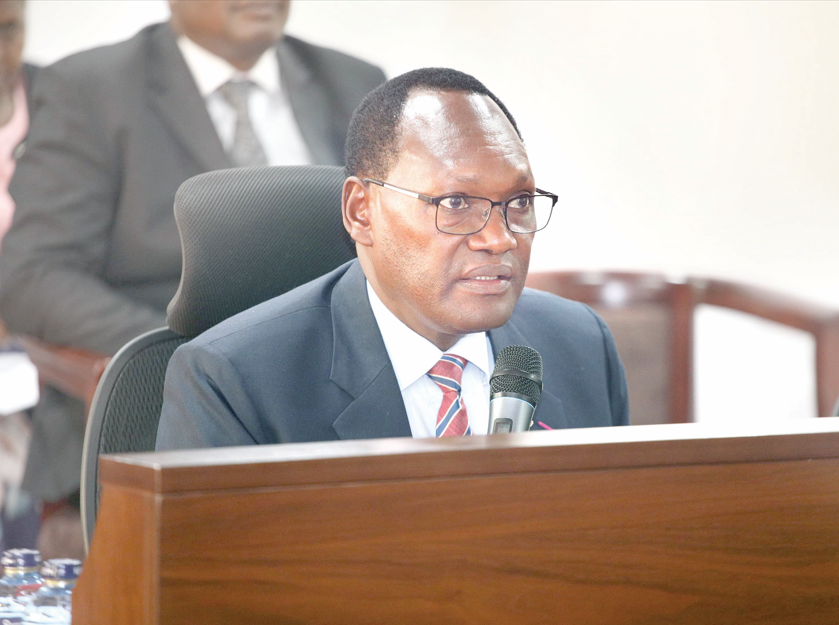Kenya’s budget headache as public debt continues to rise
By Victor Mukabi, June 9, 2025The government will have to be prudent and strategic to steer the country out of the current troubling economic situation in the coming financial year 2025/26.
As it stands, the current stock of public debt is valued at Ksh11.5 trillion, up from the Ksh11.2 trillion in January this year.
Stakeholders, both from the Bretton Woods organisations and from within the country, draw their concerns largely from the current debt levels and the fiscal space that the country operates in.
According to the National Treasury Principal Secretary, Chris Kiptoo, this debt level is equivalent to 66.9 per cent of the gross domestic product (GDP) as of April 30 this year, with domestic debt taking the largest share.
Interest payments generally apply pressure on the country’s fiscal space as it usually takes more than Sh1 trillion of the total budget.
Kenya’s domestic revenue for the fiscal year 2025/26 is projected at Ksh3.3 trillion, with ordinary revenue set at Ksh2.8 trillion, meaning that with interest payment and settlement of the recurrent expenditure by the national government, the country will have to seek more loans both domestically and internationally to address its funding gap.
Arguably, for every Ksh100 tax paid, Ksh60 will be used to pay debts, with the remaining amount being redistributed to salary payments for civil servants, among other expenditures.
The foregoing shows that going into the new financial year, Kenyans will have to brace for a new set of challenges that emanate from the harsh economic realities.
Speaking before the National Assembly Committee on Public Debt and Privatisation, Kiptoo elaborated that the domestic debt consists of loans from commercial banks, pension funds, and treasury bonds.
It comprises a total of Ksh6.2 trillion, which is equivalent to 53.6 per cent of the total debt, while the external debt amounts to Ksh5.3 trillion, equivalent to 46.4 per cent of the total debt.
According to him, the external debt is mainly forwarded to multilateral creditors at highly concessional terms.
“Honourable chairperson, the stock of public debt as of April 30, 2025, stood at Ksh11.5 trillion, equivalent to 66.9 per cent of GDP,” he stated.
Concessional loans are typically the most affordable loans, which usually have a long maturity period and a lower interest rate compared to commercial loans.
The current debt level is also in contrast to the National Treasury Cabinet Secretary John Mbadi’s plans to reduce the stock of debt as a percentage of the GDP to 52.8 per cent over the medium term.
With the rising debt stock, the goal of the National Treasury proves to be over-ambitious.
Kiptoo, during the meeting, argued that they were going to manage the debt through the implementation of the 2025 Medium-Term Debt Management Strategy, which is expected to address costs and risks over the implementation period of fiscal year 2027-28.
“First is a reduction in the cost of debt by reducing nominal debt to GDP to 7.8 per cent from the current 65.1 per cent and two, is to reduce the debt burden through reducing interest payment as per cent of GDP to 4.6 per cent from the current 5.4 per cent by the end of the projected period,” he highlighted.
He added that they also plan to lower interest payments to reduce pressure on the budget and therefore free up resources for other priorities while reducing refinancing risk through lowering debt maturing in one year as a percentage of GDP and maintaining the debt maturity both in domestic and external portfolios.
Interest rate risk
“We are also targeting to reduce the interest rate risk by increasing the average time to 8.6 years from 7.3 years, increasing the debt with a fixed rate from 85.2 per cent to 92.5 per cent,” he said.
He noted that among the strategies is the plan on reducing the number of special needs in the portfolio to 2.1 per cent from the current 5.1 per cent.
Although there is no debt conversion proposal yet, the World Bank, part of the Bretton Wood Organisations, while citing the Public Finance Review (PFR) has advised the country to consider increasing economic growth, real wages, and consumption across society.
The lender argues that the country’s fiscal policy has continued to affect tax revenues that would have otherwise reduced the over-reliance on debt to finance budget gaps.
“Tax rates in Kenya are not low vis-à-vis international peers, but the country has seen a continuous decline in its tax base since at least 2013. Kenya’s main drivers of growth and biggest sectors of the economy, the agricultural and non-tradable services sectors, are hard to tax and thus tax productivity is low,” the bank highlights.
It adds that the share of wage employees has fallen, real wages have declined, and youth entering the labour market struggle to find productive jobs, while many businesses’ profits have come under pressure, and several international businesses have exited the country, citing an unfavourable business environment.
